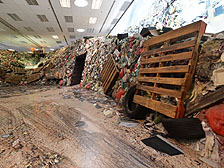
Rubbish overrun:
The Ecopark visitor centre has a “waste wall” made from disinfected genuine waste and glass fibre that silently tells a disturbing story.
Rubbish overrun:
The Ecopark visitor centre has a “waste wall” made from disinfected genuine waste and glass fibre that silently tells a disturbing story.
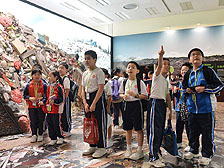
Shock and awe:
Students feel uneasy looking at the life-size “waste wall”.
Shock and awe:
Students feel uneasy looking at the life-size “waste wall”.
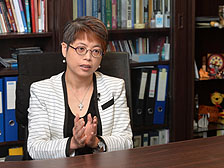
Indispensable role:
Prof Irene Lo of the University of Science & Technology believes that landfills are necessary regardless of how well people adhere to a habit of waste reduction and recycling.
Indispensable role:
Prof Irene Lo of the University of Science & Technology believes that landfills are necessary regardless of how well people adhere to a habit of waste reduction and recycling.
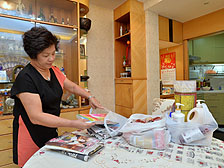
Simple habit:
Island Resort resident Mrs Li regularly collects, rinses and recycles waste at home, a practice she developed at an early age.
Simple habit:
Island Resort resident Mrs Li regularly collects, rinses and recycles waste at home, a practice she developed at an early age.

Shared responsibility:
Mrs Li believes that the Government and Hong Kong people must work together to tackle our waste challenge.
Shared responsibility:
Mrs Li believes that the Government and Hong Kong people must work together to tackle our waste challenge.
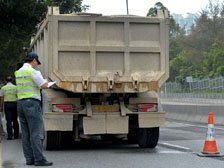
Offence crackdown:
The Environmental Protection and Food & Environmental Hygiene Departments work with the Police to stop vehicles that create nuisances.
Offence crackdown:
The Environmental Protection and Food & Environmental Hygiene Departments work with the Police to stop vehicles that create nuisances.
Putting waste in its place
May 11, 2014
“Oh, it’s so dirty!” “It’s full of garbage!” the primary students exclaim, staring at a life-size three-dimensional model of the Nim Wan landfill – an eye-popping feature of the Ecopark visitor centre in Tuen Mun.
The “waste wall”, made from disinfected genuine waste and glass fibre, silently tells a disturbing story: The city is being overrun with trash.
“If there was this much waste in my community, I would feel scared. Would it topple over and bury someone? It makes me feel so uneasy,” one student said as he eyed the simulated trash heap.
”I couldn’t imagine the city street being full of garbage like a landfill. Rubbish which can be recycled should be put into the recycle bin,” another student said.
The Environment Bureau launched its Blueprint for Sustainable Use of Resources last May, urging people to “use less, waste less” to solve the city’s waste-management problem.
Island Resort resident Mrs Li is one among many who take this motto to heart. She collects household waste paper, and cleans drinks cans and plastic containers, before bringing them to her block’s recycling bins for recycling.
“This is no trouble. It’s a simple habit I developed at a young age, long before people started talking about environmental protection,” she said.
Even if every city resident were as zealous in reducing waste and recycling as Mrs Li, helping to keep our environmental targets on track, there will still be the need to dispose of about 10,000 tonnes of waste every day in 2017. This is why the bureau proposes to expand the three landfills and build a modern incinerator.
There are concerns that an incinerator would affect air quality, producing dioxins which could damage health. Prof Irene Lo of the University of Science & Technology’s Civil & Environmental Engineering Department thinks otherwise.
“Modern incinerators do much more than simply burning garbage,” she said, adding they contain technologies that are leaps and bounds ahead of their predecessors.
Modern incinerators use “3T” technology – for temperature, turbulence and time – that control pollution, Prof Lo said. Using high temperature - over 850 degrees Celsius – and high turbulence to mix waste with oxygen thoroughly ensures complete combustion. Waste and flue gases are superheated for at least two seconds to reduce air pollutants.
The incinerators also have air pollution-control devices to remove pollutants including particulates, dioxins, heavy metals, nitrogen oxides, and acidic gases, to ensure the flue gas meets the exacting European Union standard.
Apart from reducing waste volume, Prof Lo said waste-to-energy facilities have other benefits. The planned incineration facility is expected to treat 3,000 tonnes of solid waste a day. Based on this, the government estimates that it would produce about 480 million Kwh a year – enough to supply electricity for about 100,000 homes, she said. This can reduce coal-fired electricity generation and cut greenhouse gases, she said.
Some critics have suggested the use of plasma gasification technology for the incinerator, Prof Lo said. While the technology is clean in theory, its reliability and safety are still unproven.
“Currently there are only 15 plasma gasification plants in the world. And out of these 15 plants, only four plants are used for municipal solid waste treatment,” she said.
The four plants’ capacity ranges from 15 to 220 tonnes a day. The largest of the four is in Japan, and it was shut down in December 2012.
“There is limited reliable information for us to judge whether this technology is proven technology,” said Prof Lo, adding Hong Kong cannot afford to pick the wrong technology due to our imminent waste crisis.
To avert the crisis, Prof Lo also believes it is necessary to expand the city’s landfills.
“Some people think that the Hong Kong Government should pay more attention to waste reduction, recycling and reuse. This is the first priority. However, it won’t be the one and only solution to the solid waste management problem,” she said.
“No matter how much people do to reduce waste, there are some things not worth recycling. And even if there is an incinerator, it will eventually produce ash. Landfills are needed as the final step for solid waste disposal.”
The bureau has proposed to expand all three landfills, which will be full from next year if things remain unchanged. A series of improvement measures are or will be in place to reduce nuisance around the landfills, including subsidising the retrofitting of all private refuse trucks with equipment that prevents liquid leakage and alleviates odours.
It is also stepping up enforcement against refuse trucks that cause hygiene and overloading problems, and is boosting air quality monitoring at Wan Po Road.
Mrs Li offers practical advice.
“Hong Kong has a growing population. More people create more rubbish. If we oppose the incinerator’s construction, there is no way to dispose of rubbish. The landfills will be exhausted one day. The Government and Hong Kong people must work together to solve this problem.”